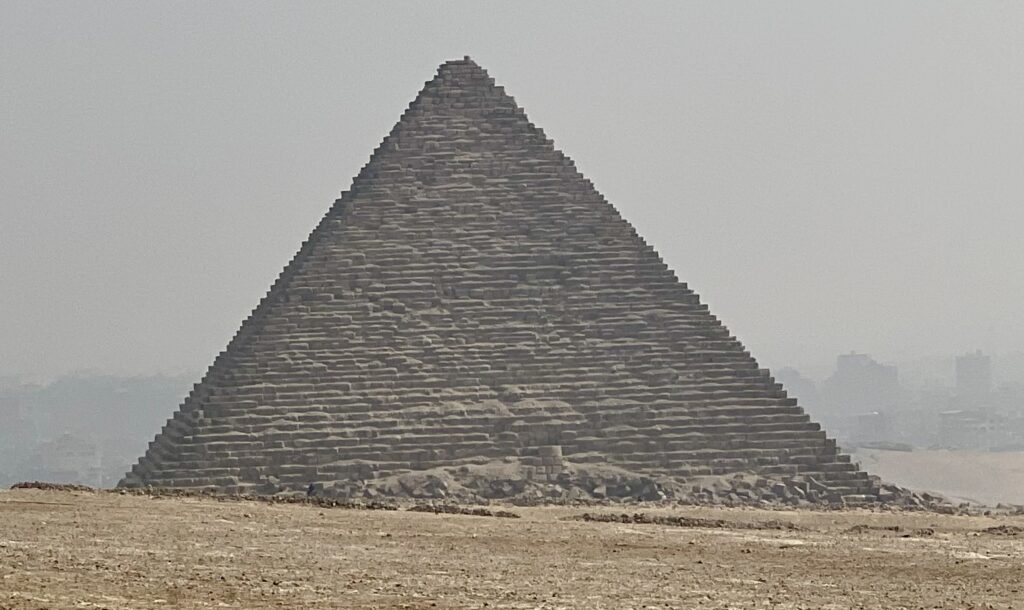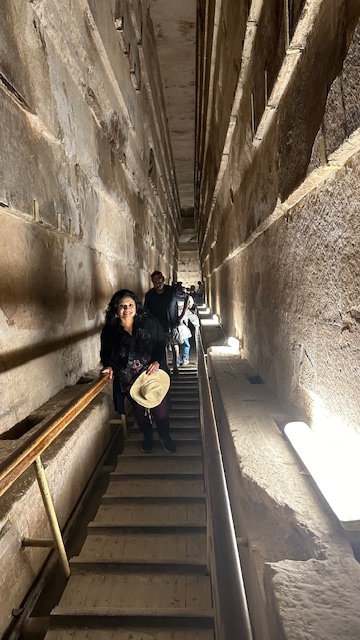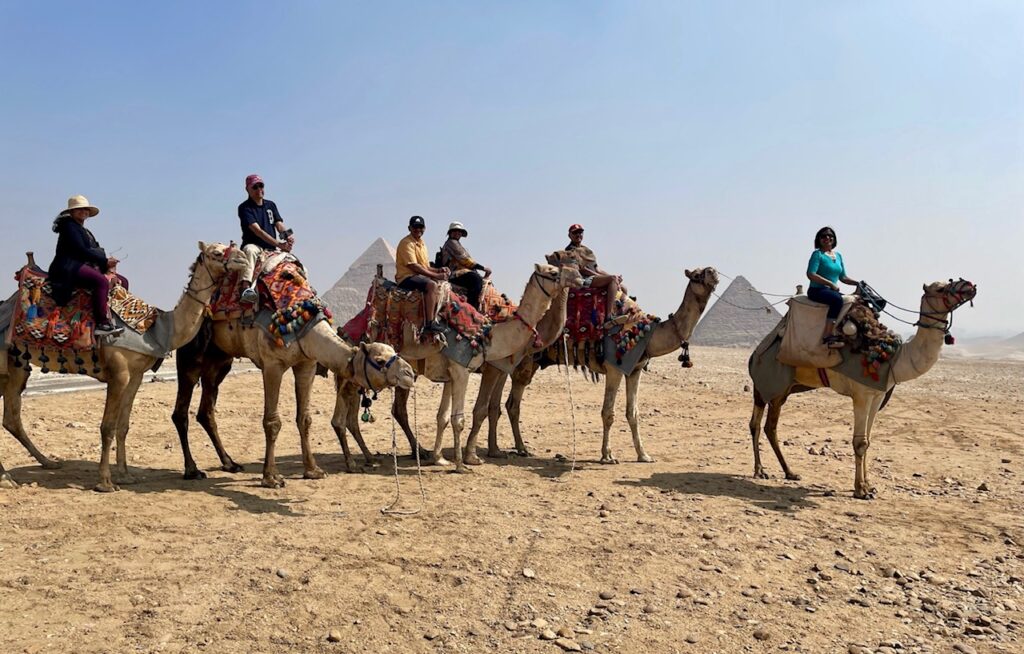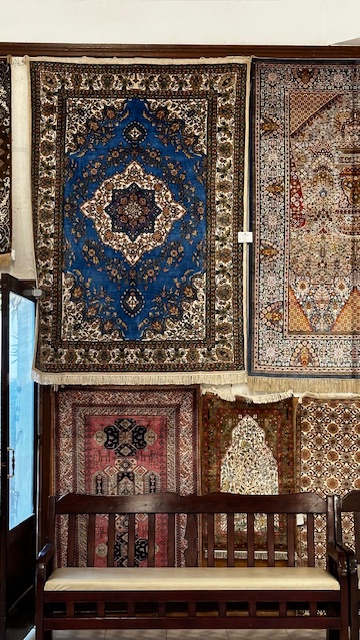- Pyramids of Giza
- Saqqara pyramids
- Carpet making school
Pyramids of Giza – It was a half hour drive from our hotel in Cairo to Giza where we visited the Pyramids of Cheops (Khufu), Chephren (Khefre), and Mycerinus which were built almost 5,000 years ago in 2570 BC. The Great Pyramid of Giza, also known as the Pyramid of Khufu or Cheops, is the oldest of the three main pyramids on the Giza plateau. These pyramid are the oldest of the Seven Wonders of the Ancient World and only Ancient Wonder to remain largely intact. For 3,800 years, the Great Pyramid was the tallest building in the world, until the Lincoln Cathedral was built in 1311 AD in England.
The pyramids were built as tombs for the pharaohs of Egypt. There are in all 9 pyramids, the Great Sphinx, and a collection of smaller tombs that sit on the Giza plateau. The smaller pyramids are tombs for the queens and daughters of the Pharaoh.




Inside the Pyramid of Cheops – You have to pay extra to go inside the pyramid. The narrow passage leading to the tomb is well lit and set up with non-slip wooden boards and handrails. Some parts of the passage have high ceiling, but in some parts, one will have to bend double and climb up. Also, the passage is 2-way traffic. After 20 minutes of climbing up the narrow passage, you will be at the tomb. The tomb itself is a relatively large chamber with high ceiling. There is a large stone sarcophagus, which doesn’t have any of the ornate detail existing in the tombs in Valley of Kings/Queens. It was really hot and humid in the room. It is easily do-able if you are fairly fit and not claustrophobic. It is not advised going in if you have back/knee issues.





It is cheaper to enter the inside of the other 2 pyramids, and typically less crowded too, but, Like the Great Pyramid, there is not a whole lot to see on the inside.
Great Sphinx of Giza – Another sight in the Giza plateau is the giant Sphinx which sits right in front of the Pyramid of Chephren and is a granite structure with the body of a lion and head of a Pharaoh (thought to be Chephren). Measuring 240 feet (73 meters) long and 66 feet (20 meters) high, it is one of the world’s largest monuments.



Camel Ride – We rode the camel for about 45 minutes with the pyramids as the backdrop.

There is a sound and light show every night at the Giza plateau when they light up the Sphinx and the pyramids with a rainbow of colors. For one hour, the Sphinx narrates the history of the pyramids. We skipped this activity.
Saqqara pyramids – Step Pyramid of Djoser – The step pyramid which is the the tomb of the third Dynasty ruler Djoser, was built by Imhotep and is the earliest major stone structure erected in Egypt. The Step Pyramid stands 60 meters high and has 6 steps.

Pyramid of Teti – The pyramid was constructed by Teti (2345–2323 BC) to be his final tomb . Teti reigned for 12 years. From the north side, a sloping passage, leads to an antechamber, from which a horizontal corridor, continues to a central chamber. The walls of the central chamber and the tomb chamber are covered with inscriptions from the “Pyramid Texts,” the oldest known Egyptian religious texts, relating to the life after death in which the incised hieroglyphs are filled in with blue pigment.



Carpet School – The village of Saqqara has many carpet stores referred to as “schools” because they provide training and jobs for children during the summer holidays as well as for housewives to use their spare time in a useful and profitable traditional craft. A typical “carpet school” in the village is divided into two parts, one for carpets weaving on looms and another for exhibiting products of various sizes, colors, and designs. We visited one of the Carpet schools where we saw teen aged kids cleverly weaving carpets. We then went over to the room where gorgeous looking carpets were on display for sale.

